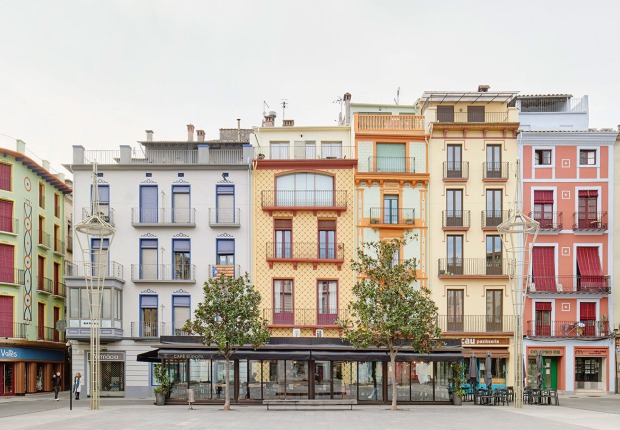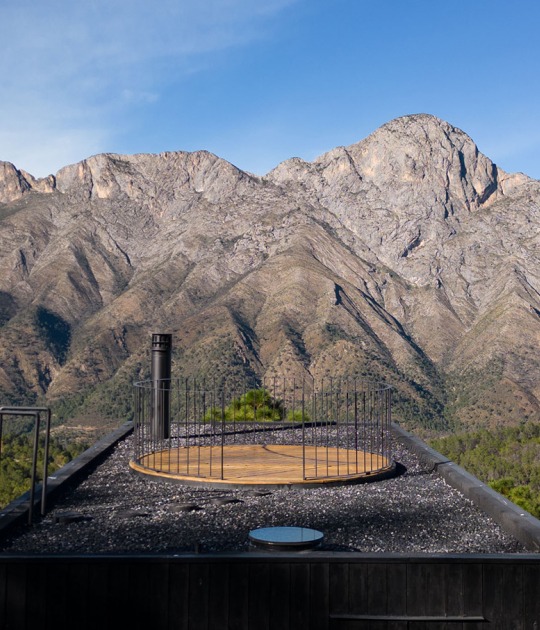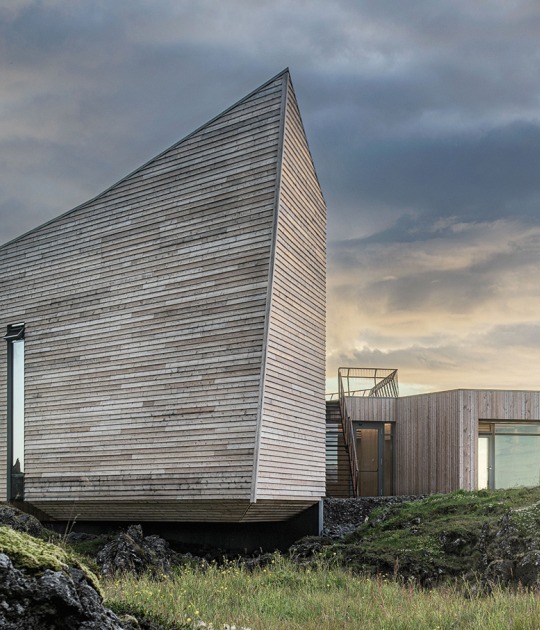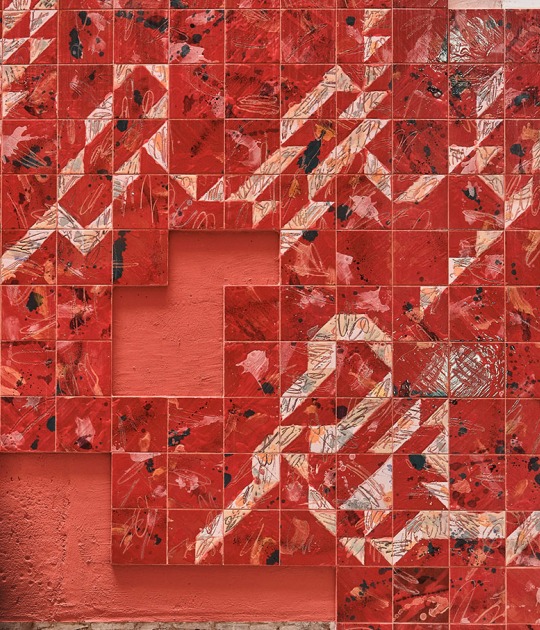
For the design of the new local pub, Leopold Banchini uses a ten-metre long wooden bar as the central element of the space. This bar acts as a counter, kitchen bench and dining table. Both the bar and the furniture surrounding it are inspired by rustic and vernacular carpentry, they are built from a single oak tree, displaying the bark and cracks of the centuries-old tree.
The bespoke stools and lamps are also created from the same oak wood, combining the wood with the use of Japanese hemp fibre, hand-cast Italian glass, volcanic stone and oxidised brass. Through the use of different materials an eclectic mix of cultural references is shown, combining Italian grotesque, Japanese wabi-sabi and English medieval renaissance.
The interior surfaces are clad using local know-how. The ceiling is covered in a hand-textured lime plaster, the existing walls are painted with lime and antique plaster, the floor is made from a mixture of earth, straw and clay with a coating of natural linseed oil, following the example of early country pubs. The interior decoration was assisted by artist Lucy Stein, who painted a love for curtains, inspired by British folklore and mythology.

Goodbye Horses Pub by Leopold Banchini. Photograph by Rory Gardiner.
Project description by Leopold Banchini
Relations between Mingei, Japanese Folk Art movements, and English Arts and Crafts have been discussed extensively. Although William Morris’s influence on Yanagi’s theory is obvious in its criticism of wage labor relations and for-profit mass production, the Japanese movement insisted on distancing itself from western influences to promoted a unique local identity. Modernist critics argued that Mingei was a sort of reversed orientalism with a romanticized take on traditional means of production. But it is also clear that Japanese Folk Art had, in return, a tremendous influence on modernist designers such as Charlotte Perriand.
Both movements were born in times of rapid industrialization and were used to promote tragic nationalism. How could they translate to a time of globalized capitalism where the uncredited and stateless visuals on our Instagram feeds have become our cultural identity? Taking a contemporary stand on a long lasting regional tradition, Goodbye Horses is a local pub in a residential neighborhood of a multicultural metropolis. Ambiguous reflections on local crafts, natural materials, cultural heritage and cross-cultural influences are at the core of the project development.

The ten meters long timber bar, laying unconventionally low, is the central element of the space and acts as a counter, a kitchen bench, a dining table. Somehow inspired by rustic and vernacular joinery, the bar and surrounding custom made furniture are entirely built out of one single large oak tree. Each part of the trunk is carefully used, revealing the veins, the bark and the cracks of this century-old giant. The bespoke stools and lights are created with the same solid oak combined with Japanese hemp fiber paper, hand casted Italian glass, volcanic stone and oxidized brass. Italian grotesque and Japanese wabi-sabi casually meet English medieval revival in an eclectic mixture of assumed cultural references.
The surfaces of the old brick building are lined using local know-how. While the existing walls are painted with limewash and old-fashion roughcast, the ceiling is covered by a hand-textured lime plaster. The beaten earth floor, commonly used in the early days of countryside pubs, is made of a mix of soil, straw and clay with a natural linseed oil coating. Reclaimed Yorkstone slabs are used in the garden and floor area with heavy traffic. Artist Lucy Stein hand-painted the large hessian curtains embracing the space. Inspired by British folklore and mythology, the natural stain on the fabric filters the light entering the pub as stained glass windows in the past. Her evocative and radically contemporary motifs might best express the contradicting but fascinating relation between globalized issues and the local discourse praised by Morris two centuries ago.



































